Deer mice were the most common visitors, sneaking in at night to forage for seeds & insects.
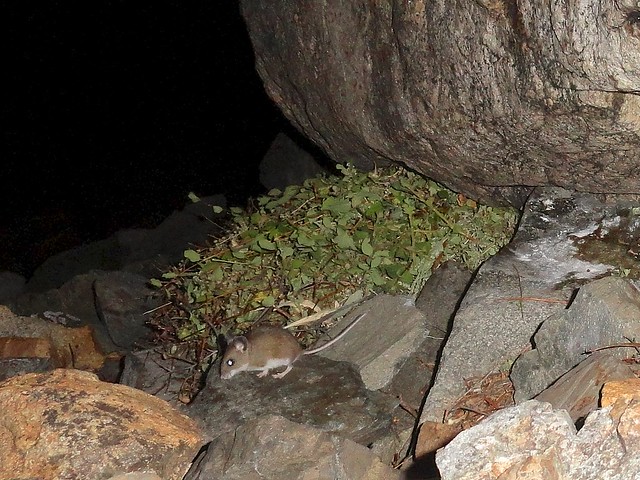
Deer mouse at pika haypile at 9:15pm
And, a bit surprisingly, the local pika were occasionally also active at night.
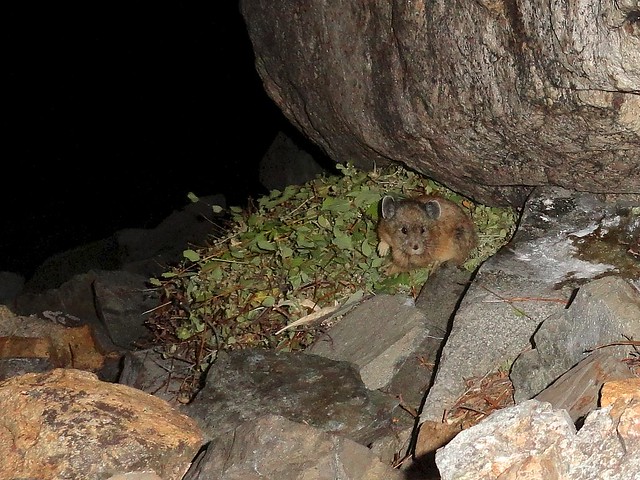
Pika tending its haypile at 4:20am
Insomnia? Seasonal anxiety?
"I gotta bring in that creambush before it goes sour..."
Chipmunks were the most common daytime drop-in. Also searching for seeds and like that fall to the wayside as the greens-loving pika fills its winter warehouse.
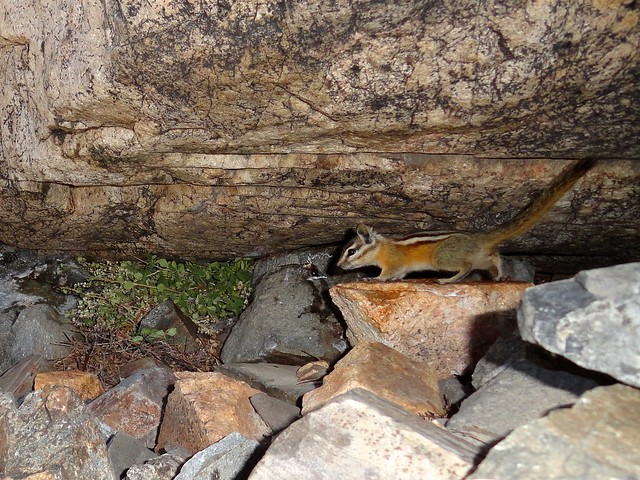
Chipmunk coming to forage pika haypile (probably lodgepole chipmunk)
In other words, they're opportunistic "dumpster divers," much like the visitors to Aplodontia burrows and woodrat stick houses.
And, where there's yin there's yang, so, of course, a local slinkster showed up hoping to catch our pika or one of the haypile pilferers. By size, this one is likely an adult male.

Long-tailed weasel slipping through the cracks at the haypile
And while comparably almost as cute, weasels are the top pika mortality machine, so our haypile hero best watch out.
And often does.
Especially in the warmth of the rising sun.

"Pika Dawn" - pika in morning sun at 6:15am
Golden-mantled ground squirrels also visited the haypile looking for treats.
Adults and juveniles.
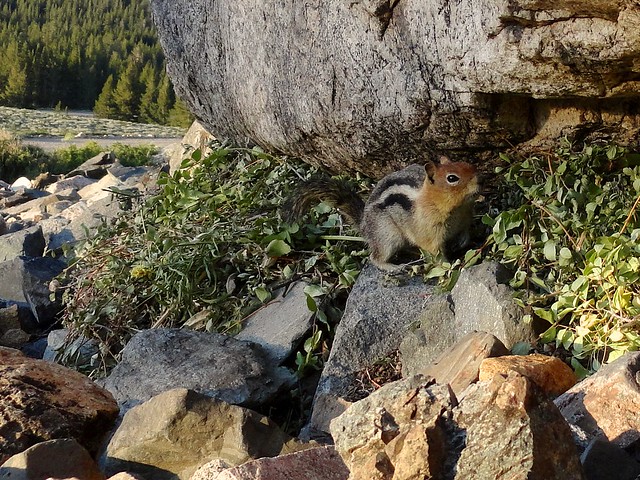
Adult golden-mantled ground squirrel digging into the haypile
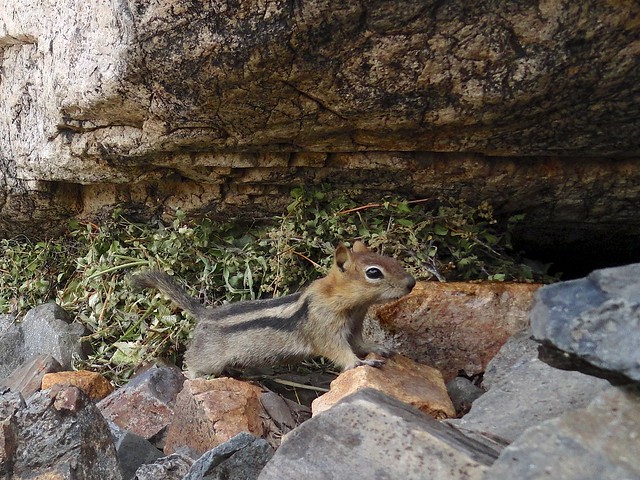
Juvenile golden-mantled ground squirrel
And they too are on the menu of the lurking long-tailed weasels.
In this case, perhaps a female. A slinkette.
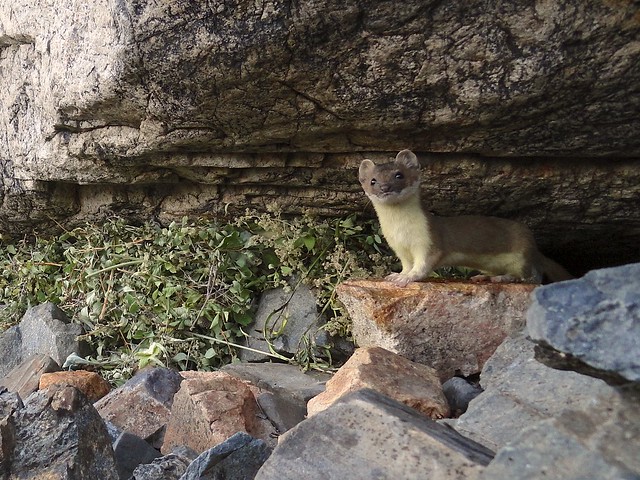
A second, smaller long-tailed weasel popping out of the rocks 2 weeks later
And though our hero is near equal size, the little hyperspeed weasel would take the pika down in an instant. A flash of teeth and cuteness that ends in a sad squeak.
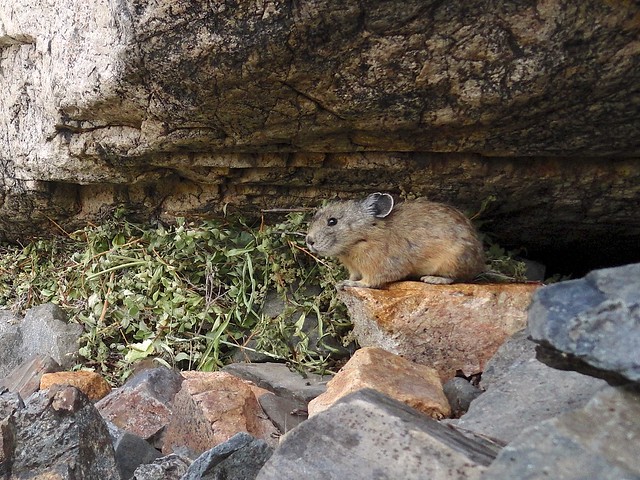
Pika on same rock as weasel for size comparison
But pika know how dangerous the talus tunnel terrors can be, and have adapted. For example, while they'll use various vocal alarm calls for different approaching predators, such as hawks or coyotes, if they spy a weasel near, they quietly disappear. Preferring a silent strategy that doesn't alert the weasel to whereabouts, over a warning for its fellows.
When they do call, such as to "mark" their territory, it's often from a favorite/specific rock.
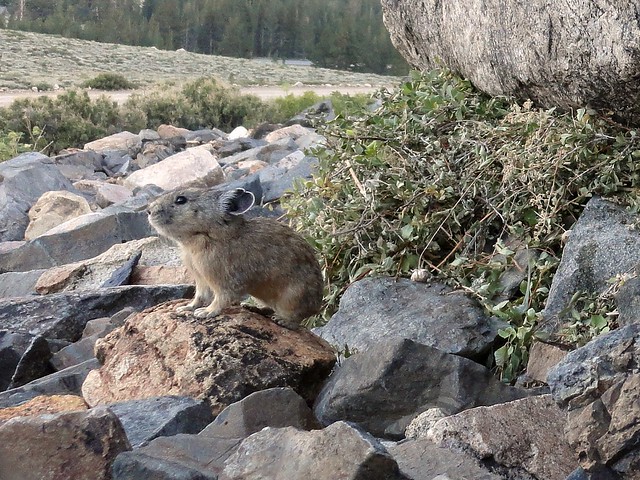
Pika calling in the evening at 7:30pm. A twilight howl? "I'm not dead yet!"
Fave rocks are also a hang out at night. But I don't think pika have been documented calling at night.
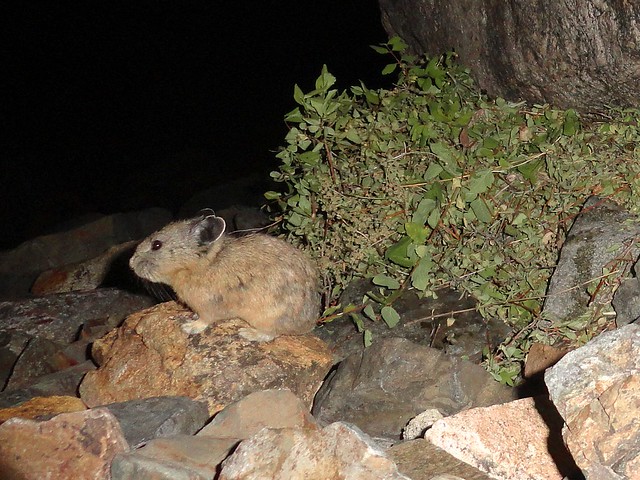
Pika on a hangout rock at 2:50am
All just a fraction of the behaviors that make pika such unique rabbit relatives.
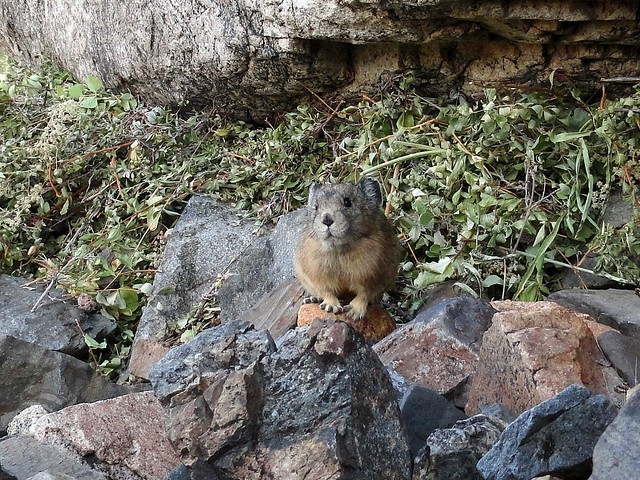
Pika showing its bunny nose
One so popular, that even their much larger cottontail cousins occasionally drop by.
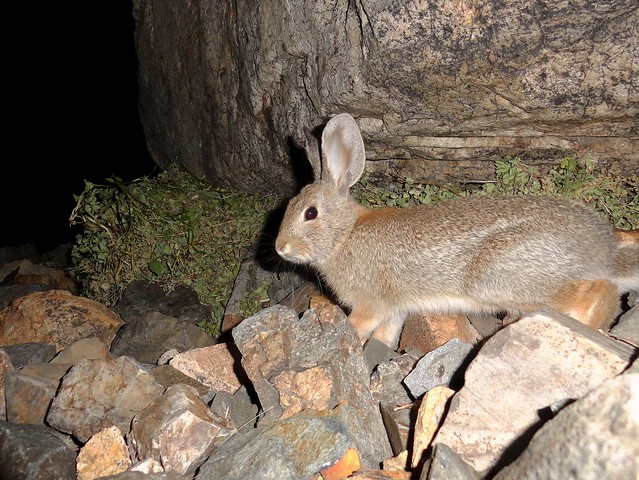
Cousin mountain cottontail checking out the haypile at 5am
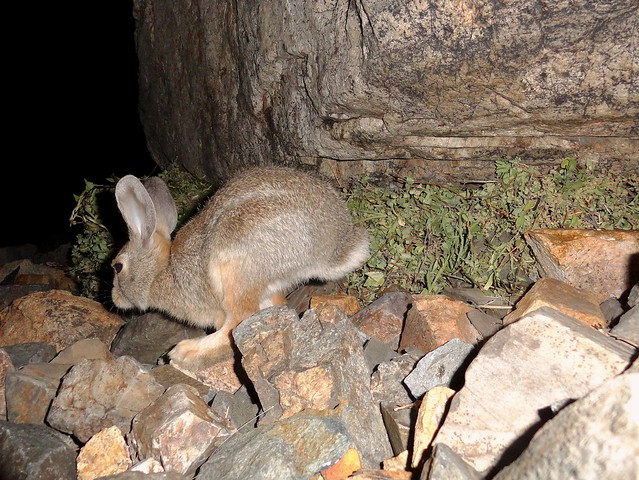
It's a tough life being the "apex of cuteness" on the talus. But some animal has to do it.
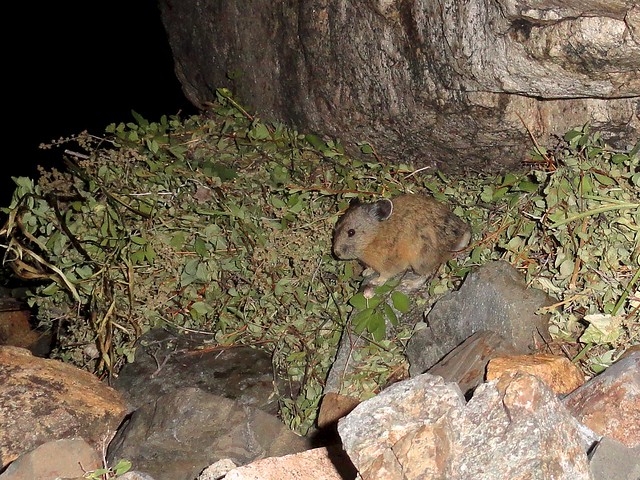
Pika enjoying some "quiet time" at haypile at 1:40am
====
References:
- Nature of a Man (this blog) - Winter Readiness
- Nature of a Man (this blog) - Seasonal Activity Patterns
- Nature of a Man (this blog) - From A to Zapus
- Nature of a Man (this blog) - Hanging with Miss Moss
- Wikipedia - American pika
- Andrew Smith, Marla Weston - American Society of Mammalogists: Ochotona princeps
- Barbara Ivins, Andrew Smith - Behavioral Ecology and Sociobiology: Responses of Pikas to Naturally Occurring Terrestrial Predators
- Andrew Smith and Barbara Ivins - Z. Tierpsychol. (Journal of Animal Breeding and Genetics): Spatial Relationships and Social Organization in Adult Pikas
- Andrew Smith - Ecology: The Distribution and Dispersal of Pikas: a) Consequences of Insular Population Structure, and b) Influences of Behavior and Climate
- Andrew Smith and John Nagy - Journal of Mammalogy: Population resilience in an American pika (Ochotona princeps) metapopulation
- Donald Grayson - Journal of Biogeography: A brief history of Great Basin pikas
- Alexie McKenzie, Andrew Smith, and Mary Peacock - Journal of Mammalogy: Kleptoparasitism in Pikas (Ochotona princeps): Theft of Hay

Awesome photos! I am curious about the chipmunk--where were these taken?
ReplyDeleteThanks Chris. Eastern Sierra Nevada, Mono County, 9,400 feet in elevation. There are 2-3 species in the area, but speciosus was the consensus of several Mammalogists. However, as one of them likes to say, and I expect you know, with munks, the only way to really be sure is a DNA test. :)
DeleteYes, they're incredibly difficult to tell! What I think it interesting about the chippies is that right around Tahoe seems to be a north-south biogeographic break between their distribution. I've not read anything on why, but I am pretty fascinated by them. I worked in the eastern Sierra for about six years with the rodents, and love them and blog posts about them! Thanks again!
DeleteYes, many of the 13ish species in CA do sort a bit north and south, don't they? If I had to guess, I'd say climate and conifers might be involved. From there going north conifers reach down to much lower elevations, and I believe the diversity of species across the pines, firs, hemlocks and like increases significantly.
DeleteAt this location there are also panamintinus, so I think that was the backup ID. :)
Golden hour Pika is my new zen idol.
ReplyDeleteGreat photos, I especially enjoy the weasel photos. These photos and story also show just how precarious life is for a rodent. Where I live we have Collared Pikas and Short-tailed Weasels. If possible, they are even cuter than your pika and weasel. We do not have chipmunks unfortunately.
ReplyDeleteOh please do not let the next post show that "flash of teeth and cuteness."
ReplyDeleteSays the person who likes to post photos of dead things on her blog! :)
DeleteGreat weasel photos -- have never gotten one here.
ReplyDelete